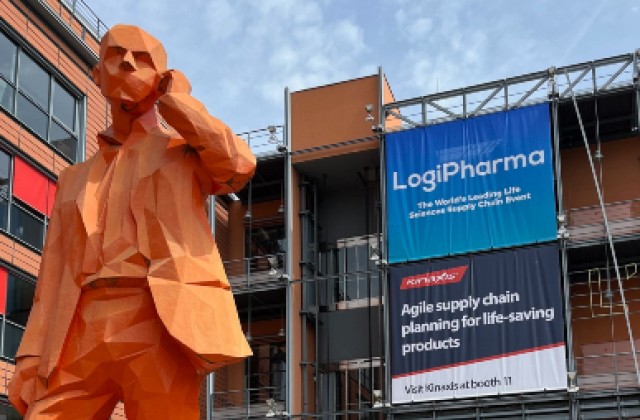
During World War II, the automotive industry shifted production from vehicles to airplanes to support the wartime effort. We now face a new kind of world war of the public health variety.
We’ve all seen coverage of healthcare workers reusing personal protective equipment (PPE) that are intended for one-time use and heard the horror stories of ventilator shortages forcing healthcare workers to decide which patients will have access to them and which will not. Medical devices supply chains, like other supply chains, are used to certain predictable demand patterns, with the occasional unexpected peak or valley thrown in. They plan their supply and inventory to that demand.
Now, demand is dramatically overwhelming supply and organizations are unable to scale to meet the need. Automotive companies, including General Motors, Ford, Fiat Chrysler and Nissan, are heeding global leaders’ requests to begin production on ventilators, face masks and respirators to fill a dire shortage. For example, Ford’s “Project Apollo” is hard at work making much needed face shields for healthcare workers.
The automotive supply chain is, in many ways, the supply chain of supply chains. It specializes in complexity, dealing with hundreds of suppliers spanning the globe and building intricate machinery with major safety implications for the consumer. It is also constantly adopting new technologies, rolling out new innovations and adapting its practices, so in more ways than one, this industry is best posed for such a shift in focus.
Like turning an 18-wheeler on a dime
However, this isn’t some easy switch. The auto industry typically operates with long lead times, but time could not be more of-the-essence. Auto leaders are quickly trying to reconfigure their supply chains to manufacture something they don’t usually make. This includes onboarding new suppliers into their massive supply chain networks, changing orders with some existing suppliers, and utilizing parts that would never have been part of their bills of material (BOMs) in the past. Not to mention the understanding of new protocols, training employees and managing the same threat to their workers’ health that we all face globally.
While in recent years more “non-traditional” partnerships between automotive companies and companies in the high-tech, consumer products (such as Bose) and retail industries, for example, are more commonplace, this is pushing them into uncharted waters. Functional silos need not apply in this new terrain. A centralized system to allow for better collaboration and visibility will be essential to successfully navigate this uncertain time.
Some of these partners come in the form of large, multinational companies that are prepared for such a challenge. But others are smaller medical device companies with just a few dozen employees unaccustomed to the scale that auto companies function in every day. Having a system of record in place that is able to manage networks big and small with multiple data streams will be critical when onboarding a new supplier.
Slowing production and an uncertain future
Production lines are incredibly efficient at doing just that: producing. Many sites are keeping quite busy manufacturing the medical products required. But vehicle production is slowing. With many suppliers across the world going offline, even when production ramps back up, it may prove challenging to find parts to keep the assembly lines moving along. We can certainly expect longer lead times (which are already quite long compared to other industries), but also the likelihood of seeking alternate suppliers, which can cause companies to incur more costs and complications.
Coupling that with the fact that people are driving much less, putting less wear and tear on their vehicles, and many people are currently out of work, the demand for new vehicles is likely to take a dip. Consumers won’t be seeking to stockpile vehicles like they did with canned goods and toilet paper. While bottom lines may suffer, automotive organizations are utilizing their production capabilities to keep more people at work and contribute to a larger cause.
Taking action today to drive tomorrow
The automotive industry has historically driven tremendous innovation across various industries, both in terms of materials and goods, and business processes. We’re confident this time will be no different and will continue to watch this space. However, it is safe to venture that modes of operation will never truly go back to the way they were before, and the best defense is good preparation.
Check out this brochure, “5 disruption response best practices: Risk management for today and the future,” to get started on your preparedness plan.






